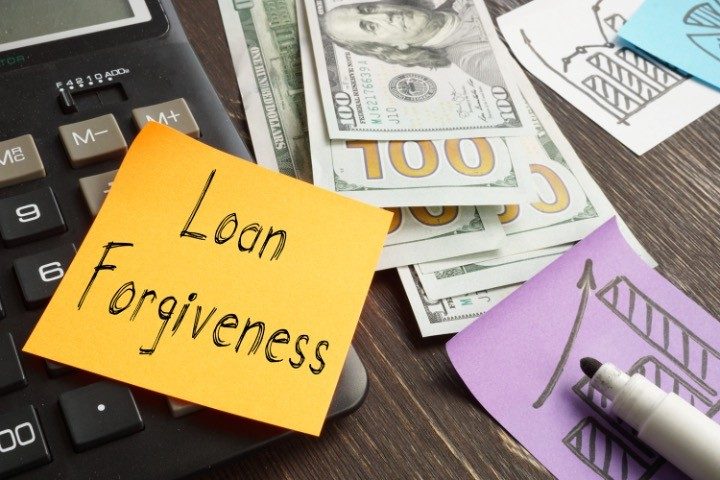
On Thursday, President Biden asked his administration to help save his student-loan debt relief plan from absolute failure. In a two-pronged attempt at this, the Department of Justice (DOJ) announced 1) plans to appeal to the Supreme Court a recent ruling by a federal appeals court in St. Louis challenging the plan, and 2) a new process in which individuals can seek to discharge their federal student loans in bankruptcy.
Regarding the recent court ruling, Reason reported earlier this week that “a three-judge panel of the US Court of Appeals for the Eighth Circuit unanimously concluded that at least some of the six states challenging the legality of President Biden’s plan to forgive some $400 billion in student loan debt have standing to challenge the program.”
In addition to ruling that the plaintiffs have standing to bring this case, the Eighth Circuit Court “also granted the plaintiffs’ motion for a preliminary injunction blocking implementation of the loan forgiveness program until such time as the court resolves the appeal.” This has stopped the plan in its tracks, at least until the Supreme Court of the United States (SCOTUS) makes a final decision to hear the case or not.
The New York Post shared that “Justice Amy Coney Barrett has rejected two requests in other lawsuits to block the debt cancellation plan, but the court has not addressed the legal merits of the program.”
While the White House waits to hear from SCOTUS, the DOJ, in close coordination with the Department of Education (DOE), announced “a new process that will help ensure consistent treatment of the discharge of federal student loans, reduce the burden on borrowers of pursuing such proceedings and make it easier to identify cases where discharge is appropriate.”
Filing for bankruptcy is never easy, and is a huge financial decision that typically is a last-ditch effort. Bankruptcy remains on your credit report for seven to 10 years, hurting your credit rating. It’s also extremely difficult to accomplish when it comes to eliminating your student loans.
Travis Hornsby, founder of Student Loan Planner, said, “We’ve had clients who have tried to get a bankruptcy discharge on federal student loans, but they’re unsuccessful the vast majority of the time. If your income is above the poverty line and you don’t have a permanent disability, your chances are slim.”
Currently, bankruptcy law makes it quite difficult to discharge student-loan debt as compared to other debt. Borrowers who seek to discharge their loans through bankruptcy must demonstrate that they will suffer “undue hardship” unless the debt is discharged. Ultimately, a bankruptcy judge will make the final decision whether to grant a discharge of the student loan debt.
Student Loan Hero shared that “about 4 out of 10 Americans who file for bankruptcy are able to have their student loans discharged, yet only 0.1% of student loan borrowers even attempt to, according to a study by the American Bankruptcy Law Journal.”
The DOJ said that Thursday’s newly announced process would provide Justice Department attorneys with “clear standards” for recommending discharge to the judge without “unnecessarily burdensome and time-consuming investigations.” The new process will also help borrowers who did not think they could get relief through bankruptcy more easily determine whether they meet the criteria to seek a discharge.
According to the DOJ press release:
“Congress may have set a higher bar for granting student loan discharges during bankruptcy, but in practice that bar has become very difficult for deserving borrowers to clear,” said U.S. Under Secretary of Education James Kvaal. “After decades of inaction in Washington, our Department of Education team was determined to partner with the Justice Department to craft clearer, fairer, and more practical standards to guide recommendations for student debt discharges during bankruptcy proceedings. This guidance is an important step toward helping struggling borrowers, many of whom never completed college or were misled into debt by dishonest schools.”
The DOJ and DOE claim that they “are committed to making this system work for borrowers.” By “simplifying the process and establishing clear standards, the agencies hope to significantly reduce the burden on borrowers and government attorneys, provide a clear path for borrowers to seek discharges and add safeguards to promote consistency and predictability.”
Since August, Biden’s student-debt relief plan has come under attack through numerous lawsuits, with one federal judge criticizing the Biden Administration program in his ruling, calling it “one of the largest exercises of legislative power without congressional authority in the history of the United States.”
Now it appears that Biden is scrambling to save the plan with these latest all-in attempts through the DOJ. Hopefully SCOTUS will hear the case and rule against his abuse of power.
The bottom line here is that when you take out a loan, you should pay it off — and leave the already overburdened American taxpayers alone.




